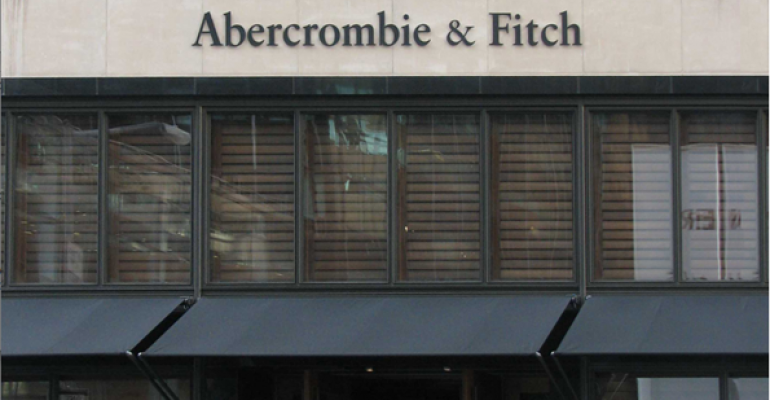Abercrombie & Fitch has not confirmed widespread reports that it is entertaining buyout overtures from American Eagle Outfitters and Cerberus Capital Management. That is not stopping retail experts from formulating their opinions on how a combination of the two apparel retailers would function.
It turns out: not very well, in experts’ opinions. Previous examples of specialty retailers growing into combined chains have not outperformed, and neither company reported strong performance results after closing out their respective first quarters.
Abercrombie & Fitch, the New Albany, Ohio-based teen apparel retailer recently reported a poor performance for the first quarter of 2017, its fifth consecutive quarter of disappointing results.
The chain, which operated about 900 stores globally across all its brands, posted a net loss of $61.7 million. It generated $661.1 million in revenue, beating FactSet consensus estimates, but its revenue was still down from $685.5 million compared with the same period last year. Its same-store sales fell by 3.0 percent.
While same-store sales at the namesake Abercrombie stores fell by 10.0 percent, Hollister was a bright spot, as it saw a same-store sales bump of 3.0 percent. In the face of overall company weakness, however, retail experts were at a loss as to how a deal with American Eagle Outfitters would result in a stronger company.
In an analysis of Abercrombie & Fitch’s first quarter results, Societe Financiers noted that operating and net margins were now only slightly above 0 percent, having fallen from 8.0 percent and 5.2 percent in 2013, respectively. In terms of its balance sheet, the retailer’s debt-to-equity ratio is 21.2 percent, but appears to have flexibility in terms of its debt capacity. Also, its average receivable days line up with its peers in the sector, according to Societe Financiers, via Seeking Alpha.
That profile might keep the company afloat long enough to stage a turnaround strategy, but it is still unclear whether American Eagle Outfitters, based in Pittsburgh, Penn., will strengthen its position by buying a company like Abercrombie & Fitch.
“If you are in a business, buying more stuff instead of fixing your core business is not a solution,” says Howard Davidowitz, chairman of Davidowitz & Associates Inc., a national retail consulting & investment banking firm headquartered in New York City. “When you’ve got a problem you have to dig in and solve the problem. Buying other chains is not a solution to the problem.”
Ascena Retail Group, based in Mahwah, N.J., is one example of a retail company that has pursued multiple chain acquisitions—with mixed to underwhelming results. The company owns eight retail chains serving mainly women and girls. Brands under its umbrella include Dress Barn, Ann Taylor and LOFT, which offer career and everyday fashions; Lane Bryant, which serves the plus-size market; and Justice, aimed at tween girls.
But the company, while managing such a wide array of brands, appears to be stressed and stretched. On May 17 it drastically cut expectations for the second half of 2017. It expects third quarter comparable sales to drop 8.0 percent and full-year 2017 comps to drop 6.0 to 7.0 percent. David Jaffe, president and CEO of Ascena, cited “unprecedented secular change that is disruptive to traditional business models,” as the cause for the revision.
“We believe operating conditions in our sector are likely to remain challenging for the next 12 to 24 months,” Jaffe said in a statement.
Challenging is a fitting term for the environment facing American Eagle Outfitters, too. The retailer did not have a stellar first quarter. It did turn in positive net revenue of $762 million, up 2.0 percent from last year. Its comp store sales were also up 2.0 percent.
In a recent report, however, L&F Capital Management noted that the retailer will still face long-running competitive pressures on its margins, due to promotions and higher shipping costs stemming from its digital business. It also noted that its comp store sales increase was slower than the previous years’ 6.0 percent, in a report via Seeking Alpha.
With such performance numbers and Ascena as an example of one retailer evolving into a holding company, a potential combination has so far left industry experts uninspired.

